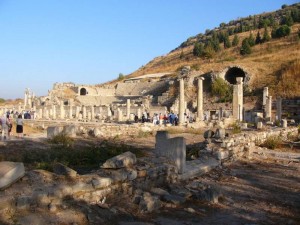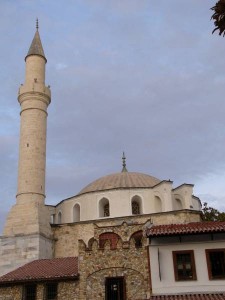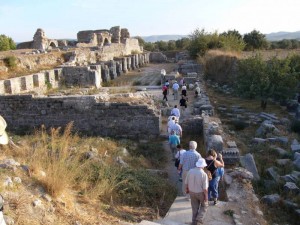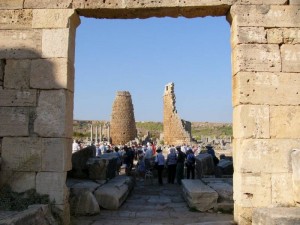- Jižní Korea
- Tchaj-wan
- Filipíny
- Nepál
- Srí Lanka
- Izrael
- Kambodža
- Vietnam
- Laos
- Myanmar
- Omán
- Spojené arabské emiráty
- Katar
- Kuwait
- Bahrain
- Thajsko
- Sýrie
- Jordánsko
- Libanon
- Iran
- Jemen
- Tadžikistán
- Turecko
- Turkmenistán
- Uzbekistán
- Kyrgyzstán
- Indie
- Bangladéš
- Bhútán
- Malajsie
- Brunej
- Arménie
- Azerbajdzan
- Gruzie
- Saúdská Arábie
- Mongolsko
- Singapur
- Východní Timor
- Severní Korea
- Irák
- Afganistán
- Pakistán
- Japonsko
- Okinawa dep. Japonsko
- Palestine dep. Israel
- Hong Kong dep. China
- Irian Jaya dep. Indonesia
- Kashmir dep. Indie
- Macao dep. China
- Nakhichevan dep. Azerbajdžán
- Sibiř dep. Rusko
- Sikkim dep. Indie
- Tibet dep. China
- Indonésie
- Čína
- Abcházie dep. Gruzie/Rusko
- Kazachstán





GR-94 Greece, Turkey (Ephesus only) bus and cruise trip
Date of travel: Oct 7 – Oct 22, 1994
ITINERARY:
Early in the morning on Oct 7 Lothar takes me to San Diego airport. A flight from San Diego via St. Louis and New York to Athens GREECE where on Oct 8.
In Athens I joined a Globus Tour for a bus trip through mainland Greece visiting and sightseeing: Marathon, Thermopylae and the Meteora area monasteries on the rocky outcroppings. The tour continued to Delphi to hear about the Oracle and see the excavations, then taking a ferry across the Gulf of Corinth to Patras, an important harbor on the Peloponnese Peninsula, and Olympia, the place of famous Olympic Game of antiquity. That was followed by drive to Epidaurus with its 2,300 years old theatre and Nauplia, the first modern capital of Greece. From here to Mycenae with the excavations of the earliest Greek civilisation, ancient Corinth and back to Athens where 3 full days of sightseeing (for strike Acropolis closed).
Read more
TK-97 Turkey trip
Date of travel: Oct 12 – Oct 26, 1997
ITINERARY:
On Oct 12 afternoon a drive in a rented car from Vista to Los Angeles airport (LAX) and flight to Frankfurt, Germany, landing there in mid morning Oct 13. That was followed by a flight to Istanbul, TURKEY, where Orient and Occident meet.
On Oct 14 full day tour of Istanbul (originally Constantinople) visiting among other places Justinian’s Hagia Sophia and Sultan Ahmet’s Blue Mosque. The following day the Topkapi Palace before crossing Bosporus over a bridge to the Asian part of Turkey (also known as Asia Minor or Anatolia). During the next 10 days traveling by bus the following places were visited: the cities of Bursa and Eskisehir, Gordion (where Alexander the Great cut the proverbial knot), the Turkish capital Ankara (sightseeing and paying respect to Ataturk the first president of modern Turkey at his mausoleum). Then visit to caravansaries on the Silk Road on the way to Cappadocia with the moonlike landscape at Goreme, the troglodyte village of Avcilar and the underground city of Kaymakli.
Read more
IO-04 Indian Ocean cruise – visiting: UNITED KINGDOM, GREECE, Crete (Greece), TURKEY, EGYPT, JORDAN, DJIBOUTI, KENYA, TANZANIA, Zanzibar (Tanzania), MADAGASCAR, Reunion (France), MAURITIUS, Mayotte (France), SOUTH AFRICA and the CZECH REPUBLIC
Date of travel: Oct 21 – Dec 29, 2004
ITINERARY:
At noon on Oct 21, 2004 I drive a rented car from Vista to Los Angeles airport. Early evening I take an American Airlines B-777 plane to London Heathrow in UNITED KINGDOM where at noon Oct 22. I have accommodation in Hilton Hotel at the airport. Here I meet some fellow travelers. Next morning a Qantas charter flight takes us from London Heathrow to Athens, GREECE where in the afternoon. By bus to the harbor in Piraeus where boarding our ship “Minerva II.” I get a very nice cabin with a balcony.
The following morning, Oct 24, is a sightseeing of “Athens with Acropolis” and in the afternoon of the “Temple of Poseidon” on Cape Sounion. After night sailing Minerva II. makes port in another Greek harbor Nauplion. I take part in the morning trip to “Heraion and Tiryns.” In the afternoon, Minerva II. sails to Heraklion on the Greek island of CRETE where early morning on Oct. 26. Here I have signed up for morning trip to excavation of “Minoan city of Knossos” and for “Lasithi Plateau Drive” for the afternoon. On Oct 27 Minerva II. lands at the city Aghios Nikolaos in the northeastern part of Crete. Also here I take a bus tour from the city with visit to remains of “Minoan town Gournia” and other places.
After a day on the sea with interesting lectures our ship comes to Kusadasi in TURKEY where we sightsee ruins of the “Roman city of Ephesus” (my 3rd visit to this place) with a show in its theatre in the morning and the “Apollo Sanctuary in Dinyma” and a “theatre in Miletus” in the afternoon. Day after Minerva II. moors in Antalya in the evening. The following day, Oct 31, I am taking a bus tour to “Aspendos,” built in 2nd century AD and probably the finest and best preserved in Asia Minor. We see a show in its theatre. An aqueduct is a major attraction here. In the afternoon, I go by a tour bus to “excavations of Perge” originally a Hellenistic city founded in 1000 BC.
Read more
P-06 Persia trip with stops in New York and Istanbul
Date of travel: Apr 17 – May 12, 2006
ITINERARY:
At noon on Apr 17 I drive in a rented car from Vista to Los Angeles airport. I fly to New York where very early the following morning. I spend most of the day here visiting the Central Park, Lincoln Center, the City Hall and the Brooklyn Bridge. Then I take a plane to Istanbul in TURKEY (I have a walk through the center of the city visiting the Blue Mosque there). By a red eye flight I go to Tehran in IRAN (the old name was Persia) where early on Apr 20.
That morning I continue with 2 other travelers by plane to Mashhad in north-eastern part of the country. We spend most of 3 days sightseeing this Holy City of Shiites and its vicinity (mainly the Shrine of Imam Reza and caravanserais on the Silk Road). Then we fly back to Tehran where we are joined by the rest of our group. A day is devoted to sightseeing of this 15 million people capital of Iran (visiting the Saadabad Palace Complex, the Crown Jewels Museum and the Carpet Museum).
Read more
ST-07 STANS trip – Turkmenistan, Uzbekistan, Tajikistan and Kyrgyzstan with a stop at Istanbul, Turkey
Date of travel: May 29 – Jun 23, 2007
ITINERARY:
On May 29 at 4 AM I am leaving Vista in a rented car for the 100 miles (160 km) distant Los Angeles airport. From there at 8 AM on a plane to New York, where at 4:30 PM. Here I meet several fellow travelers. In the evening our plane depart for Istanbul in TURKEY. On May 30 at noon Turkey time we are there. We spend the afternoon in a hotel or walking through the city. The rest of our group joins us here. Late in the evening we board a plane for Turkmenistan.
On May 31 at 2:30 AM we land in Ashkhabad, TURKMENISTAN. Between California and Turkmenistan times there is just 12 hours, so I am on the other side of the globe. On June 1 we leave Ashkhabad for 2 day trip to a city of Mary. We drive through Karakum Desert (it means “black sand”) and visit excavations of Anau and Abiwerd. We see the archeological museum in Mary and we are overnight there. The following day we explore the excavations of Merv, which is the main attraction of Turkmenistan. It was an important city on the Silk Road until it was sacked and all its people killed by Mongols in 1221. Then we return to Ashkhabad. The following morning we have sightseeing of Ashkhabad including its large bazaar. The city has many monuments to its life long president Niyazov, who died recently. Most of them are his bigger than life gold covered statues and many are in form of modern building he ordered to built. In the afternoon we drive to excavations of Nissa in foothills of Kopet Dag Mountains, which makes the border with Iran here. Next day we fly to the northern part of the country and explore excavations of Konye-Urgenc, which was the capital of ancient Khorezm.
Read more
TK-12 TURECKO, Kurdistan (cast IRAKU)
Termin cesty: 7.5. – 28.5.2012
ITINERARY:
On May 7, 2012 at noon I fly on Turkish Airlines from Prague, Czech Republic to Istanbul, TURKEY. I land there in midafternoon. A van takes me to hotel in center of the city. Here I meet the rest of our group.
Next day early in the morning we fly from Istanbul to Erzurum in eastern Turkey. By bus to our hotel outside the city. A city tour starts before noon. We visit the “Grand Mosque,” a madrasa, and Royal Tombs. After lunch we see more mosques, a museum, and “Tas Hani” caravanserai. Final stop is at a jewelry store.
In the morning on May 9 we drive by bus from Erzurum through a wild mountainous region to Kars near Armenian border where late afternoon. Russian tsars and Ottomans fought about this place 4x. Some houses were built by Russians, some by Turks. There is a visit to the 10th century “Church of Apostles” changed to a mosque. There is a fort above the city. The streets are full of mainly young people. Overnight in a hotel.
After leaving Kars the following day, we stop at excavations of “Ani.” About 1000 years ago it was a capital of Armenia. Earthquake destroyed it. After lunch, we visit caves of an active salt mines. We pass through the town of Igdir under the famous Ararat Mountain. From here it is close to town Dogubayzit. Near this town we explore Ishak Pasha Palace. We stay in a local hotel.
Read more
